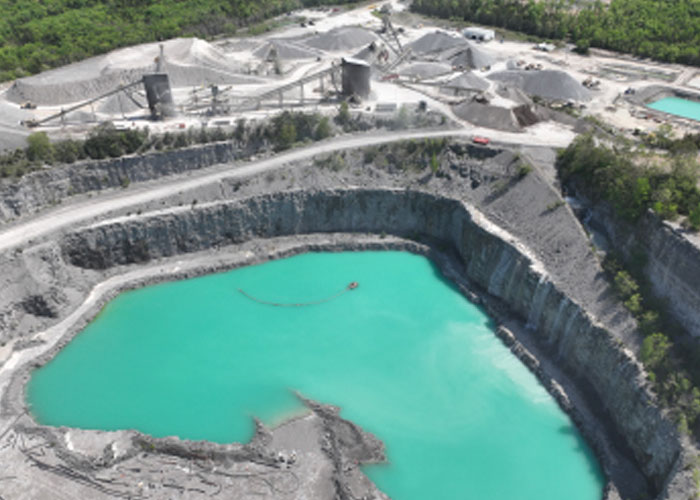The benefits of water use and reuse are numerous, including cost savings, improved performance, and an enhanced image of the Mining industry. Global mining companies are maximizing production and operating efficiencies to maximize profitability. This trend is expected to continue as investment improves treatment processes, increases desalination capacity, and optimizes resource recovery. For example, doubled its commitment in Latin America with its acquisition of 50% of Aguas y Riles S.A. in June 2021.
Depending on the location of your home, you might have to purchase an STP to handle your sewage. Generally, residential buildings need at least one STP to treat sewage. Many STPs are located underground, making them difficult to maintain. Moreover, you may not be able to inspect them without hiring an expert. It is better to consult a professional if you have any doubts about the process.
Efficiencies
There are many ways to maximize water efficiencies in the mining industry. Water from mining operations should be reused and reclaimed to reduce costs and maintain environmental quality. Advanced water treatment systems can recycle mined wastewater for irrigation or drinking water. In mining operations, water is not just used for the mining process; it also includes runoff from the conveyance, cooling, drilling, and remediation processes.

The mining industry has significant challenges in terms of water and energy use. According to the World Economic Forum, there will be a 40% shortfall between the available water and the demand for it by 2030. This represents one of the world's economy's most important risks over the next decade. Hence, conserving water and energy is imperative to the long-term sustainability of the mining industry. To conserve water and energy, mining companies must invest in innovative processes.

Costs
The mining industry is increasingly aware of the need to mitigate the negative impacts of water usage and waste disposal. According to a recent Carbon Development Project survey of investors with assets worth more than $57 trillion, 64% of respondents reported adverse effects on their businesses related to water use and waste disposal in the last five years. These impacts typically include increased operating costs, poor water quality, and flooding. In addition, mining companies are often required to spend more money on water management than they would otherwise.
Despite these challenges, the mining industry is also a key player in the global transition to renewable energy. World leaders will need 3.3 billion tons of metals and minerals to help power the world's economy in the coming decades. In addition, renewable energy technologies will be increasingly used to store and generate energy, including wind, solar, geothermal, and nuclear. One World Bank report estimated that global mineral production would grow by 50% by 2050.
Impacts
The importance of sustainable water use in mining is becoming increasingly apparent. A recent Carbon Development Project survey of 530 investors, representing $57 trillion in assets, revealed that 64% of the respondents had experienced detrimental water impacts in the past five years. The main reasons for these impacts were reduced ore grade and increased operating costs. Regardless of the cause, the implications are substantial. This article will examine how the mining industry can take action to reduce these negative impacts.
Water is a valuable resource in the mining industry, but it is limited. Therefore, mining operations must prove their water use and reclamation methods are environmentally sound. Many water reclamation and reuse methods are becoming available to the mining industry. The most cost-effective approach is to reuse water, as this reduces raw water intake and treatment costs. Reuse also helps to achieve operational savings. And it can also reduce overall water costs, as the capital costs are lower than the treatment cost.
Case studies
In recent years, the mining industry has become increasingly aware of the need to manage water sustainably. According to a survey by Carbon Development Project, which represents 530 investors with assets totaling $57 trillion, 64% of the respondents said that water issues had adverse impacts on their businesses within the past five years. The most common water-related impacts were flooding, poor quality, and water shortages. These impacts resulted in increased operating costs.
The mining industry has many opportunities to improve water management practices. One example is the reclamation of historic waste rock facilities. For example, the Argyle Mine mines have reduced their water use from one million megalitres per year in 2005 to just 300 megalitres in 2009, a figure that is a third lower than the previous year's total. These practices have helped increase the incentive for development in an arid areas.
Resources
The mining industry is becoming increasingly conscious of its impact on water sustainability. According to a recent Carbon Development Project survey, 64% of respondents reported having experienced water-related business impacts in the past five years, including water shortages, flooding, and decreased water quality. These impacts increase the cost of operating mining operations. However, these concerns can be addressed by using more sustainable methods and technologies. This article will discuss some benefits of water-efficient technologies and water trading for mining operations.
The mining industry relies on large volumes of water. With an increase in the amount of ore produced in the world, the mining industry needs to find ways to improve water use efficiency and reduce costs. A recent report by the World Bank suggests that mining operations will need more than 3.2 billion tons of metals and minerals to achieve their goals in the global low-carbon transition. In addition to reducing their water consumption, the industry will be able to store and produce more renewable energy. A World Bank report estimates mineral production will increase by 500% by 2050.







































Share Post